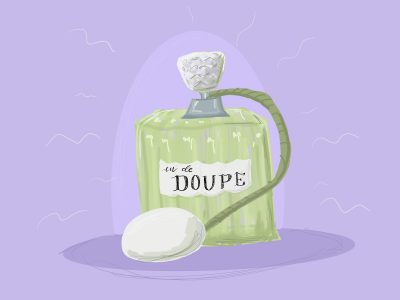It seems like “dupe” is the internet’s favorite word.
In the past year, Google searches for the word have almost doubled in popularity. A “dupe,” in this context, is a cheaper knock-off version of a desired but more expensive item.
Due to their increasing popularity, companies are spitting out replicas of popular clothing items, accessories and even products such as water bottles or headphones.

Public consciousness of the term seemed to peak after a TikTok video of two friends pointing at Target items and exclaiming “doop” went viral. Though the content was clearly humorous, it demonstrated a great deal about the internet’s eagerness to slap the “dupe” label on nearly any product. Target itself even commented on this video, “lolol our legal team won’t let us say dupe so thanks for spreading awareness on our behalf.”
More than ever before, it seems like the public is in search of — and favoring — quick and easy replacements for items they don’t have the funds or time to seek. The larger part of this issue connects to the already existing and increasing speed of trend cycles.
In modern society, particularly among younger crowds with more internet access and less disposable income, people are purchasing fast fashion rather than pieces of quality. Already a problem to begin with, the concept of dupes augments this common practice.
Still, I think it’s hard to blame people for gravitating towards duplicates. Large retailers like Target or Amazon are incredibly convenient and can recreate a new release in little enough time for it to still be in style enough to sell. We all know money doesn’t grow on trees, and these companies offer knock-offs for relatively cheap pricing.
More than just fast fashion, dupe culture highlights a trend in loss of craftsmanship. Many clothing items we see on social media apps appear to be copies of designer items instead of simply affordable original pieces. In fact, dupes have become such a popular concept, people are starting to recognize the brands of certain dupes, assuming ownership of the dupe rather than the original product.
In no way am I blaming the consumer for turning to a cheaper clothing item versus an expensive one. My point is, consumers are buying knock-offs and dupes just because they are copies of more expensive brands, rather than just cheaper items of their own. Why can’t a product just be what it is?
The problem with the normality of dupes, along with the obvious overconsumption and supporting fast fashion, is that they detract from the creativity and hard work of the original creator.
Generally, dupes are not about inspiration — they are copies. Rather than manufacturing cheap, similar items, sellers and consumers are purposefully replicating an exact item. This is not only a disservice to the brands these fast fashion sellers are ripping off, but also to the people wearing or using the item.
Dupe culture has caused, in my view, masses of people — especially of the same demographic — to look almost the same, in terms of style. It’s as if the already existing speed of the trend cycle process has amplified.
Every month or so, a new series of dupes becomes all that everybody wears, and then they are tossed in the landfill as the item it’s based on starts fading out of trend. Not only is this environmentally unfriendly, but truly a disservice to the companies or designers creating the original items.
However, sometimes fast fashion and dupe culture can’t be avoided. Gen-Z consumers exist as the primary target of Instagram or TikTok videos promoting dupes, high quality and expensive items that can’t be purchased because of the hefty price tag. Therefore, we turn to the cheaper, easier option.
With all this being said, if not for dupes, how else are consumers supposed to stay trendy or fashionable on a budget?
Firstly, there is buying clothing and accessories secondhand. Many people donate and sell items of perfectly good quality, for much less than one may think. Apps like Poshmark and Vinted have sellers listing clothing from very notable brands in good condition for a lot cheaper than the original.
In addition to being cost-effective, thrifting gives consumers the opportunity to have a still desirable “look” by collecting items that, when styled in certain ways, can still fit the current trends.
Secondly, even though the idea of creating a capsule wardrobe and finding evergreen pieces may not be “in vogue” right now, it truly will serve us as consumers in the long run. High quality items with affordable prices do exist. And with fast fashion becoming so much more expensive than it used to be, we might as well shop at lower and medium end retailers for the same prices we would fast fashion. As consolation, I often see items that were trendy no more than five years ago come back into style in different ways–meaning that capsule wardrobes can easily still produce trendy outfits.
Most importantly, I feel we need to detach ourselves from that idea that just because there is a cheap version of a “desirable” item, we need to purchase it. Trend cycles move so quickly that constantly buying dupes is not sustainable and not necessarily. There will always be a trend to follow, so it’s important to stick to what feels authentic to our personal style, and invest in those pieces.




















































































































